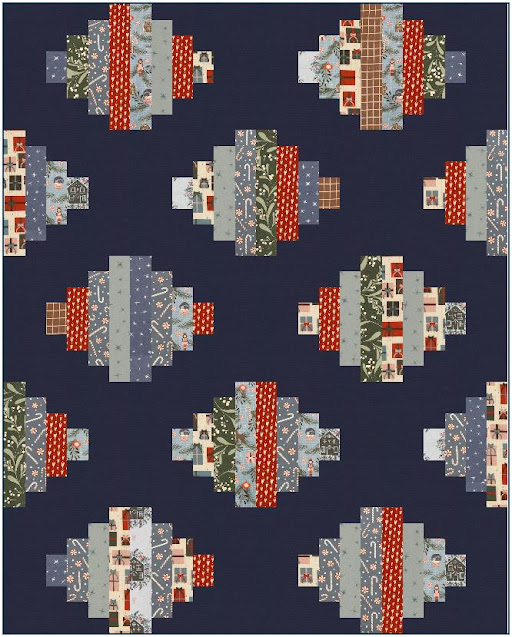How do you like to baste your curved blocks to prep them for sewing? Do you pin? Do you use glue? Do you not baste at all?
I was a pinner and I probably over-pinned. I would rather take the time to make sure the edges of the fabric pieces were aligned and set before sewing than trying to align them while stitching them together. For the blocks above I would probably have used up to 20 pins. This was not only time consuming, but while I was sewing I had to make sure my fabric I was keeping a 1/4" seam allowance while taking out each pin before I sewed over it.
I had used glue basting for bindings and EPP (English paper piecing) so I decided to give glue basting a try and I fell in love. I thought I would put together a short tutorial on how I glue basted my
Awning blocks but this technique will work on Drunkard's Path blocks, or really any seam (curved or straight).
My reasons for falling in love with glue basting:
- I found glue basting to be quicker than pin basting both during the basting and during the sewing.
- I also found glue basting to be more accurate than pin basting with the convex and concave fabric edges staying aligned better.
- No tucks! I sewed all 30 half moon shaped blocks for Awning without a single tuck or need to unsew!
TOOLS FOR GLUE BASTING
To glue baste curves, you need just enough glue to hold the fabric together while sewing. I would recommend a glue stick type glue over an Elmer's type glue because it is dryer and easier to apply just a small amount.
My favorite glue pen is by Sewline. You can find these glue pens in your local quilt shop, on Amazon, or on Etsy. I purchase mine on Etsy as I have found the best prices there.

STEP 1 - PREP YOUR FABRICS
To start glue basting, fold and mark your two fabric pieces at the center and quarters by finger pressing, ironing, or using a removable marking device. I like to use my iron to make the creases.
STEP 2 - GLUE THE CENTER
I place my two fabric pieces together, with the convex piece on the bottom and the concave piece on top, right sides together.
I start glue basting by using just a dab of glue from my glue pen to adhere the centers of the two pieces.
STEP 3 - BASTE FROM CENTER OUT
I next add a little glue right along the edge of the convex fabric piece from the center to one of the quarter markings. I try to keep the glue to less than 1/4" from the edge at the center.
The glue can get on the mat behind the block so you may wish to use a piece of paper or extra mat you an easily wash behind the block.
I slowly ease the two fabrics together, matching the edges and pressing to adhere, from the center of the block out to the quarter mark.
Continue to baste the other sections of the block in the same manner.
If you are using just a little glue stick there is no need to iron to dry or set the glue, it should dry quickly.
STEP 4 - SEW YOUR BLOCK
Now that your block is basted, you can go over to the sewing machine and sew the pieces together without having to worry about pulling out pins (or sewing over them) or keeping the fabric piece edges aligned.
Once you have sewn your curved block, press the seam (the direction you like to press or what is indicated in the pattern.
I hope that I have inspired you to glue basting a chance, I have definitely converted from pinning or gluing. Give it a chance for a block or two to see you like it.
If you want to try making your own half moon blocks, you can get the
Awning Pattern from my pattern shop.
*affiliate links - This post contains affiliate links. If you purchase items through the links I will earn a very small commission. You will not pay more when buying a product through my link
























































